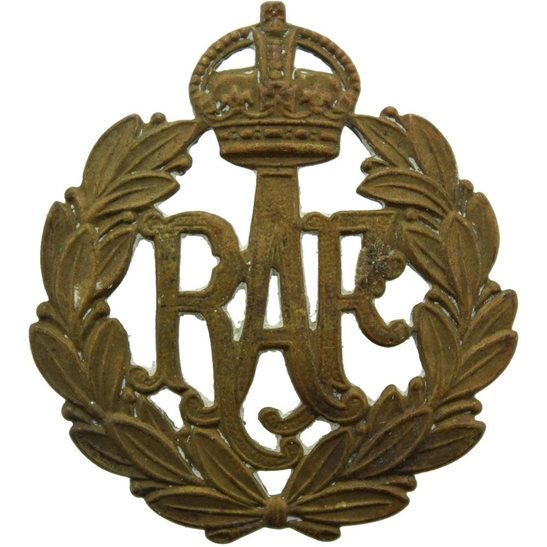Personal Details
Born: 27 March 1892
Family: The second son of Robert Matthews and Kittie Kelly of Church Street, Ightfield, Shropshire. On the 24 July 1918 Peter married Rose Morris and together they had a son, Cecil.
Civilian Occupation: On leaving school he became an apprentice plumber working for his father. In 1939 his occupation was painter.
Residence: In 1939 he lived in 3 Glyndn, Llanfyllin, Montgomeryshire, Wales.
Other Information: We have been unable to locate a date of death although a Paul Cecil Kelly born on the same day died in Wrexham in 1973.
Military Details
Regiment: Royal Air Force (previously Royal Navy)
Rank: Mechanic
Service Number: 223907 (previously F23907)
Date of Enlistment: 17 November 1916
Date of Discharge: 30 April 1920
Reason for Discharge: Demobilisation
Peter was awarded the Campaign Medals (British War Medal, and Victory Medal).

The British War Medal (also known as 'Squeak') was a silver or bronze medal awarded to officers and men of the British and Imperial Forces who either entered a theatre of war or entered service overseas between 5th August 1914 and 11th November 1918 inclusive. This was later extended to services in Russia, Siberia and some other areas in 1919 and 1920. Approximately 6.5 million British War Medals were issued. Approximately 6.4 million of these were the silver versions of this medal. Around 110,000 of a bronze version were issued mainly to Chinese, Maltese and Indian Labour Corps. The front (obv or obverse) of the medal depicts the head of George V. The recipient's service number, rank, name and unit was impressed on the rim.
The Allied Victory Medal (also known as 'Wilfred') was issued by each of the allies. It was decided that each of the allies should each issue their own bronze victory medal with a similar design, similar equivalent wording and identical ribbon. The British medal was designed by W. McMillan. The front depicts a winged classical figure representing victory. Approximately 5.7 million victory medals were issued. Interestingly, eligibility for this medal was more restrictive and not everyone who received the British War Medal ('Squeak') also received the Victory Medal ('Wilfred'). However, in general, all recipients of 'Wilfred' also received 'Squeak' and all recipients of The 1914 Star or The 1914/1915 Star (also known as 'Pip') also received both 'Squeak' and 'Wilfred'. The recipient's service number, rank, name and unit was impressed on the rim.

